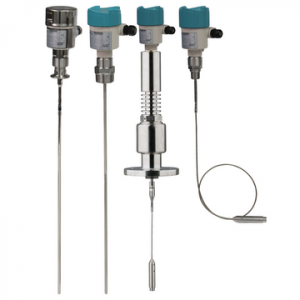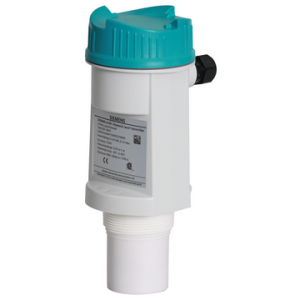Level Gauges
In the process industry, accurate level measurement is essential to optimise process flows and ensure safe operation. With suppliers like SIEMENS and YOKOGAWA, we offer level gauges that are customised to handle challenging environments and varying liquids and solids. Our solutions provide reliable and accurate measurements for applications such as water and wastewater treatment, energy and chemical industries. Through our high-quality level gauges, we help our customers improve productivity and meet high standards of process control and safety.
- System Solutions
- Gas Analysis
- Liquid Analysis
- Flowmeters
- Pressure Gauges
- Level Gauges
- Temperature Gauges
- Laboratory Analysis
- Data Loggers
- Regulators
More information
What a level gauge does
A level gauge measures the degree of filling in a container or sieve, either continuously
(gives an analogue value 0-100 %) or as point level (high/low alarm).
The choice of technology depends on the medium (liquid/solid), dielectric constant,
temperature, pressure, vapours, foam, etc. The five demanded are described below
methods, their working principle, strengths, limitations and typical
uses.
Guided Wave Radar (GWR)
- Principle: A short microwave pulse is sent down a probe (rod or wire).
The pulse is reflected at the interface between two media; the time difference gives the level
(Time-Domain-Reflectometry). - Advantages:
- Accurate ±2-5 mm, independent of pressure, temperature and vapour.
- Works well at low εr-values and can measure interfaces (e.g. oil/water).
- Requires no air-free zone above the level - can be mounted in narrow towers or standpipes.
- Restrictions:
- The probe is in contact with the process → risk of coating, abrasion or tensile forces when moving bulk materials.
- Maximum length about 40 m; requires variant with weight for powder.
- Typical applications: Separators, narrow columns, LNG tanks, sludge in sewage plants.
Level switches (point level switches)
- Objective: Provides only 'on/off' signal for overfill protection, dry running alarm, pump control.
- Common technology: Vibrating fork, float, capacitive, rotating paddle, magnetostrictive, optical, RF admittance.
- Strengths: Cheap, simple, often SIL rated for safety circuits.
- Restrictions: No continuous output signal; each instrument covers only one fixed alarm level.
Radar (free-radiating, 24-80 GHz)
- Principle: Antenna transmits microwave pulses or FMCW sweeps; the time/frequency shift of the reflection indicates the distance to the surface. No contact with the product.
- Advantages:
- Withstands high pressures (>160 bar) and temperatures (>400 °C).
- Barely affected by dust, vacuum or aggressive chemicals.
- Newer 80 GHz sensors have narrow beam → small dead zone and can be mounted close to wall.
- Restrictions:
- Weak economy at very low εr (<1.7) or thick foam.
- Requires clear view - internal struts or stirrers may produce false echoes (managed with echo cancellation).
- Typical applications: Crude oil tanks, asphalt, cement silos, biogas reactors.
Ultrasound
- Principle: The transducer transmits a sound pulse (20-65 kHz) towards the surface and measures the echo time; the speed of sound in air is assumed or compensated.
- Advantages:
- Completely non-contact and cost-effective for water, sewers and open channels.
- Easy installation - no pressure feedthroughs.
- Restrictions:
- Sensitive to temperature gradients, fog, heavy foam or strong vapours that attenuate sound.
- Limited range (usually ≤15 m) and needs free surface above the liquid.
- Typical applications: Pumping stations, separators, grain silos (with dust protection).
Continuous capacitive level measurement
- Principle: The probe and the tank wall form a condenser. As the height increases, the
the dielectric constant in the gap; the capacitance - and thus the output signal - changes proportionally. - Advantages:
- Simple, robust, no moving parts; works in pressurised vessels.
- Low power consumption and good for low levels in small vessels.
- Can be designed for both conductive and non-conductive liquids and powders.
- Restrictions:
- Requires calibration against the medium εr; changes (temperature, recipe) can drive the measurement.
- Coatings on the probe give errors; insulated probes or RF admittance reduce the problem.
- Typical applications: Glue silos, plastic granules, acids/bases where radar is problematic due to low dielectricity.






